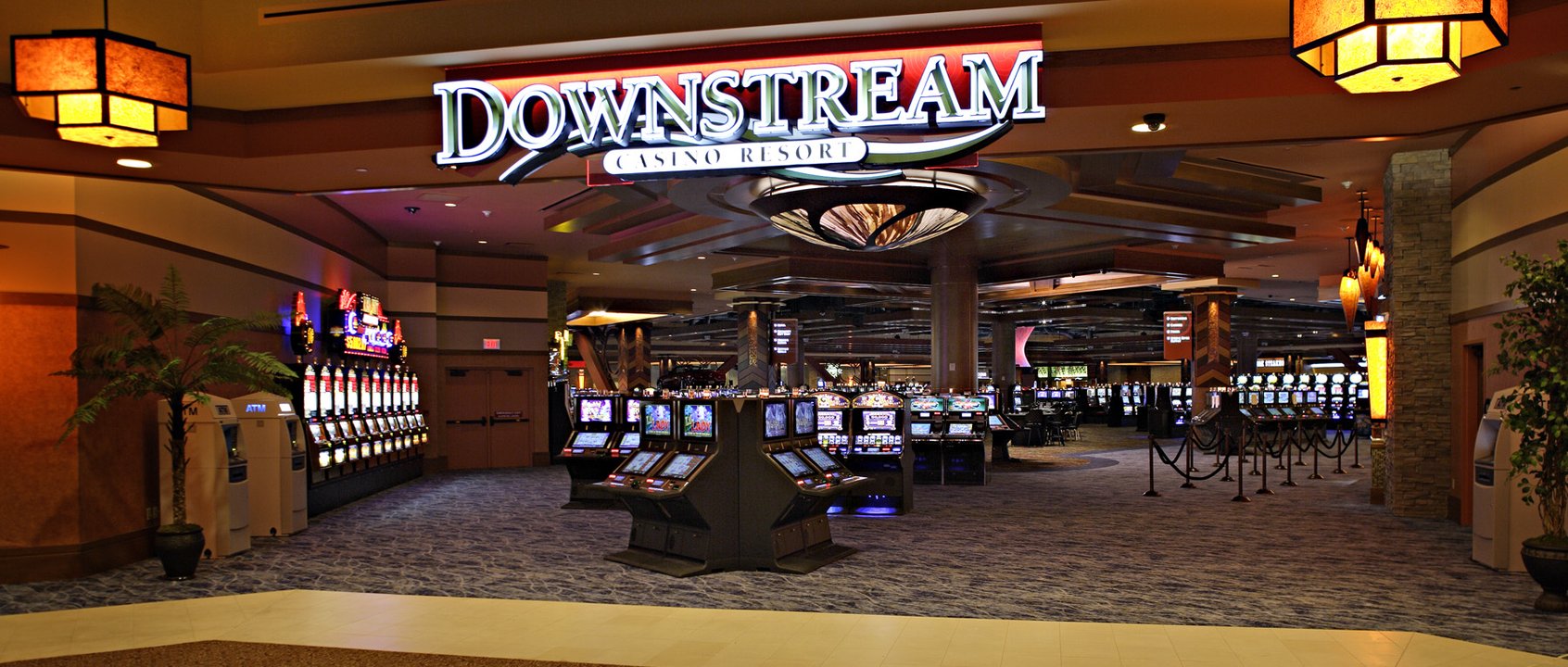Background and Context
Downstream Casino Resort straddles the "Tri-State" area where Oklahoma, Kansas and Missouri all meet, just off of Interstate Highway 44, a few miles southwest of Joplin, Missouri. The ultimate goal of the owners, the Quapaw Nation (formerly known as the Quapaw Tribe of Oklahoma), was to create a destination casino resort that would attract a wide range of visitors, spur economic development, and benefit the citizens who call this region home. The Quapaw challenged the JCJ Architecture team to bring thier vision to life at a remarkably fast pace, opening for business in less than 1 year.
Downstream Casino Resort began with the creation of a thoughtful, phased master plan, which would allow the Quapaw Nation to generate revenue and maintain smooth operations during subsequent phases. JCJ Architecture worked with general contractor Manhattan Construction on the fast-paced development of Phase 1: including a casino, 12-story, 222-room hotel with outdoor pool, fitness room, and expansive entertainment terrace. At the completion of this first phase, the gaming floor included 2,000 machines and 44 table games, including poker.

Multiple expansions soon followed including the Pavilion, a multi-use entertainment/conference facility with regular live theatre and concert bookings and the Downstream Early Learning Center, which provides child care for 6-12 years olds, open exclusively to employees of the Downstream Casino.
In 2013, the JCJ Architecture, alongside general contractor, Manhattan Construction completed the second phase of development. The project scope included a $40 million, 152 room hotel, world class spa, expanded food and beverage options and event spaces

Design Response
The Quapaw were a division of a larger group known as the Dhegiha Sioux many years ago. The Dhegiha split into the tribes known today as the Quapaw, Osage, Ponca, Kansa and Omaha when they left the Ohio Valley. The Quapaw moved down the Mississippi River into Arkansas, this is the origin of the word Ogaxpa, which can be translated as "downstream people." The Quapaw Nation desired to honor their history and culture in a subtle manner throughout the project, providing recognition without dominating the property.
The characteristics of a flowing stream: fluidity, tranquility and vibrancy, were incorporated througout and influenced the circulation pattern, material selection and color palette of the property.

The design team carefully researched Quapaw Tribal history. A visit to the University of Arkansas Museum revealed an important collection of Quapaw pottery, featuring a distinctive interlocking spiral pattern. These significant works, for which the Tribe is well-known, provided inspiration for a dramatic 16' sculpture which serves as a focal point in the resort lobby. The signature spiral pattern can also be found in textiles, wallcoverings, surface treatments, sculptures and even in the spiral arrangement of the plan.




Art plays a key role in the design of the resort. Guests are treated to a museum-like journey through Quapaw history with important photographs and works of art. A large-scale reproduction of Charles Banks Wilson's "Quapaw Man" etched onto bronze plates is prominently featured in the lobby. The resort's art was collected from Tribal Members' private collections and beautifully integrates Quapaw culture into the space.
The design of the hotel tower itself is an abstract interpretation of a feather, a direct wish of the Tribe. The 12 story building can be seen from the interstate, and serves as a beacon with programmable LED lighting.
Challenges
The Quapaw, JCJ Architecture and general contractor, Manhattan Construction worked in close alignment and with relentless dedication to 'make the impossible, possible' and meet the accelerated design and delivery schedule for this project - to be operational in less than one year. The team pushed forward and succeeded in opening the doors to the casino in spectacular style just 10 months and 26 days from kickoff.
Manhattan Construction was required to provide a GMP (Guaranteed Maximum Price) just 30 days into design, which ultimately held through project delivery. To arrive at an appropriate figure, the design and construction team, owner's representatives and subconsultants toured comparable facilities, examining and documenting levels of finish and quality commensurate with expectations for the Downstream Casino Resort. From there, the construction team was able to draw from a significant database applied to architectural project scope definition drawings.
The JCJ team devised a carefully orchestrated project review and approval process that would continually move the project forward. Presentations and approvals with theTribal Business Committee were scheduled weekly, and designs and alternates were reviewed and approved before the end of each week.
Unlike many aggressive construction projects, the only fingerpointing was aimed toward solutions.












